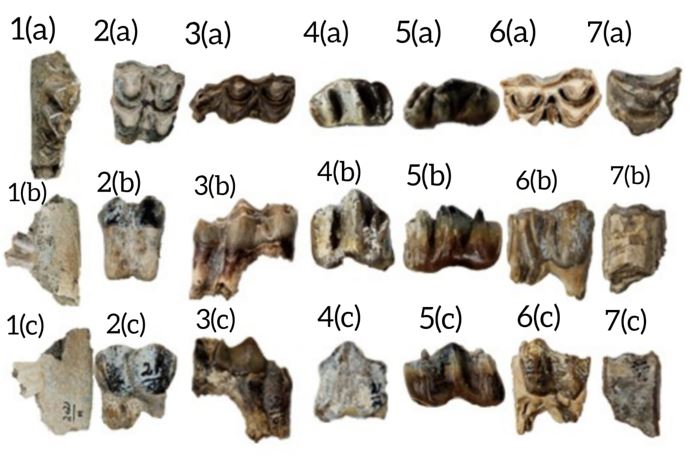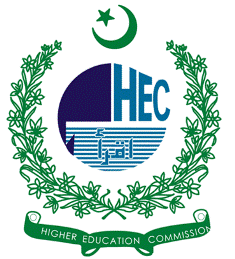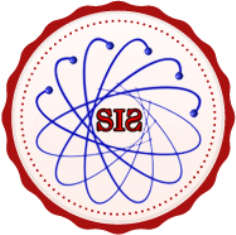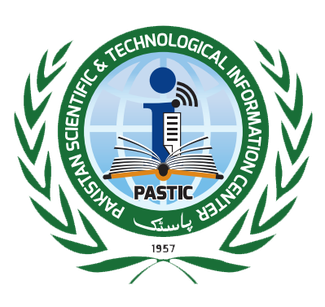New Bovid (Artiodactyla) Fossils from the Siwaliks of Pakistan: Reviving a Lost World
Keywords:
Palaeontology, Taxonomy, Selenoportax, Pachyportax, Kobus, SiwaliksAbstract
This research investigates new fossil specimens of bovids (Artiodactyla) from the Dhok-Pathan Formation in the Siwalik region of Pakistan, a crucial site for understanding South Asia's paleoecology and evolutionary history. This study provides new insights into the taxonomy and diversity of Siwalik bovids, addressing gaps in the fossil record and contributing to a more comprehensive understanding of their evolutionary relationships. In this paper, new dental elements of bovids were recovered (seven specimens were collected) comprised of both upper and lower dentitions have been recovered from the most fossiliferous sites i.e., Dhok Pathan and Hasnot villages, in Potwar foreland basin of Himalayas in Pakistan. On the basis of comparative morphology and the precise measurements of these specimens refer to the mandible of Selenoportax vexillarius, rest of all are molars and premolars of Pachyportax latidens, Pachyportax nagrii and Kobus porrecticornis. All the new dental material is documented in this research belongs to Dhok Pathan Formation of upper Siwaliks Group. The stratigraphic layers, encompassing various depositional environments such as river channels and floodplains, provide insights into the chronological and environmental contexts of the fossil assemblages. Comparative analysis with fossils from other regions ensures the accuracy and relevance of the findings, contributing to a refined understanding of the evolutionary history and biogeographic patterns of these species. The study also documents the paleoecology of the region, indicating a grassland and woodland biome that supported diverse bovid species. These findings underscore the Siwalik region's significance as a key site for studying the evolutionary history of Artiodactyla and provide valuable data for future paleontological and conservation studies. The examined fauna suggests a vast and an open landscape with intermittent dry and flood seasons, creating a mosaic of ecotonal habitats with numerous niches. This research enhances our knowledge of the Siwalik region's past biodiversity and environmental changes, emphasizing the need for continued exploration and analysis of its fossil record.
References
Loudon, A.S.I., 18 - Nutritional Physiology of Some Asian Ruminants, in Physiological Aspects of Digestion and Metabolism in Ruminants, T. Tsuda, Y. Sasaki, and R. Kawashima, Editors. 1991, Academic Press: San Diego. p. 403-425.
Prothero, D.R. and R.M. Schoch, Horns, tusks, and flippers: the evolution of hoofed mammals. 2002: JHU Press.
Barry, J.C., et al., Faunal interchange and Miocene terrestrial vertebrates of southern Asia. Paleobiology, 1991. 17(3): p. 231-245.
Barry, J.C. and L.J. Flynn, Key biostratigraphic events in the Siwalik sequence, in European Neogene mammal chronology. 1990, Springer. p. 557-571.
Barry, J.C., et al., Neogene mammalian faunal change in southern Asia: correlations with climatic, tectonic, and eustatic events. Geology, 1985. 13(9): p. 637-640.
Barry, J.C., et al., Faunal and environmental change in the late Miocene Siwaliks of northern Pakistan. Paleobiology, 2002. 28(S2): p. 1-71.
Molnar, P. and J.M. Stock, Slowing of India's convergence with Eurasia since 20 Ma and its implications for Tibetan mantle dynamics. Tectonics, 2009. 28(3).
Maiti, G. and N. Mandal, Early Miocene Exhumation of High-Pressure Rocks in the Himalaya: A Response to Reduced India-Asia Convergence Velocity. Frontiers in Earth Science, 2021. 9.
Capitanio, F.A., et al., India–Asia convergence driven by the subduction of the Greater Indian continent. Nature Geoscience, 2010. 3(2): p. 136-139.
Pusok, A.E. and D.R. Stegman, The convergence history of India-Eurasia records multiple subduction dynamics processes. Science Advances. 6(19): p. eaaz8681.
DiPietro, J.A. and K.R. Pogue, Tectonostratigraphic subdivisions of the Himalaya: A view from the west. Tectonics, 2004. 23(5).
Searle, M.P. and P.J. Treloar, Introduction to Himalayan tectonics: a modern synthesis. Geological Society, London, Special Publications, 2019. 483(1): p. 1.
Patnaik, R., Neogene–Quaternary Mammalian Paleobiogeography of the Indian Subcontinent: An appraisal. Comptes Rendus Palevol, 2016. 15(7): p. 889-902.
Sakai, H., et al., Pleistocene rapid uplift of the Himalayan frontal ranges recorded in the Kathmandu and Siwalik basins. Palaeogeography, Palaeoclimatology, Palaeoecology, 2006. 241(1): p. 16-27.
Beerling, D.J., et al., Potential for large-scale CO2 removal via enhanced rock weathering with croplands. Nature, 2020. 583(7815): p. 242-248.
Raymo, M.E., W.F. Ruddiman, and P.N. Froelich, Influence of late Cenozoic mountain building on ocean geochemical cycles. Geology, 1988. 16(7): p. 649-653.
Fortelius, M., et al., Provinciality, diversity, turnover, and paleoecology in land mammal faunas of the later Miocene of western Eurasia. 1996.
Batool, A., et al., New Bovid fossils from the Late Miocene Hasnot (Siwaliks, Pakistan). Palaeoworld, 2016. 25(3): p. 453-464.
Khan, M.A., et al., New boselaphine remains from the Dhok Pathan Formation of the Middle Siwaliks, northern Pakistan. Pakistan Journal of Zoology, 2013. 45(5).
Khan, M.A., M. Akhtar, and M. Iqbal, The late Miocene artiodactyls in the Dhok Pathan type locality of the Dhok Pathan formation, the Middle Siwaliks, Pakistan. Pakistan J. Zool. Suppl. Ser, 2010. 10: p. 1-90.
Barry, J.C., et al., The neogene siwaliks of the potwar plateau, Pakistan, in Fossil Mammals of Asia. 2013, Columbia University Press. p. 373-399.
Gentry, A.W., N. Solounias, and J.C. Barry. Stability in higher level taxonomy of Miocene bovid faunas of the Siwaliks. 2014. BioOne.
Baker, P.S., et al., Relationship of denture cast measurements to width of maxillary anterior teeth. The Journal of Prosthetic Dentistry, 2011. 105(1): p. 44-50.
Akbar Khan, M., et al., Gazella(Bovidae, Ruminantia) remains from the Siwalik Group of Pakistan. Alcheringa: An Australasian Journal of Palaeontology, 2016. 40(2): p. 182-196.
Molnar, P. and P. Tapponnier, Cenozoic tectonics of Asia: effects of a continental collision. science, 1975. 189(4201): p. 419-426.
Kusky, T.M., et al., Evolution of the East African and related orogens, and the assembly of Gondwana. Precambrian Research, 2003. 123(2): p. 81-85.
Windley, B.F., The Himalayas. Geology Today, 1985. 1(6): p. 169-173.
Yoshida, M. and Y. Hamano, Pangea breakup and northward drift of the Indian subcontinent reproduced by a numerical model of mantle convection. Scientific Reports, 2015. 5(1): p. 8407.
Jafari, A., et al., Evolution of the Zagros sector of Neo-Tethys: Tectonic and magmatic events that shaped its rifting, seafloor spreading and subduction history. Earth-Science Reviews, 2023. 241: p. 104419.
Ricou, L.-E., Tethys reconstructed : plates, continental fragments and their Boundaries since 260 Ma from Central America to South-eastern Asia. Geodinamica Acta, 1994. 7(4): p. 169-218.
Parsons, A.J., et al., Geological, geophysical and plate kinematic constraints for models of the India-Asia collision and the post-Triassic central Tethys oceans. Earth-Science Reviews, 2020. 208: p. 103084.
Burg, J.-P., Geology of the onshore Makran accretionary wedge: Synthesis and tectonic interpretation. Earth-Science Reviews, 2018. 185: p. 1210-1231.
Coward, M.P., et al., Collision tectonics in the NW Himalayas. Geological Society, London, Special Publications, 1986. 19(1): p. 203.
Searle, M.P. and P.J. Treloar, Himalayan Tectonics — an introduction. Geological Society, London, Special Publications, 1993. 74(1): p. 1.
Craig, J., et al., Petroleum systems and hydrocarbon potential of the North-West Himalaya of India and Pakistan. Earth-Science Reviews, 2018. 187: p. 109-185.
Jaswal, T.M., R.J. Lillie, and R.D. Lawrence, Structure and Evolution of the Northern Potwar Deformed Zone, Pakistan1. AAPG Bulletin, 1997. 81(2): p. 308-328.
Najman, Y., et al., The Late Eocene-Early Miocene Unconformities of the NW Indian Intraplate Basins and Himalayan Foreland: A Record of Tectonics or Mantle Dynamics? Tectonics, 2018. 37(10): p. 3970-3985.
Gardezi, S.A.H., et al., Geological constraints on the Western Kohat foreland basin, Khyber Pakhtunkhwa, Pakistan: Implication from 2D and 3D structural modelling. Iranian Journal of Earth Sciences, 2021. 13(2): p. 61-76.
Scherler, D., R. Thiede, and C. Glotzbach, Middle Miocene rise of the High Himalaya and the disruption of transverse drainage due to basal accretion. 2020. p. 19241.
Wang, X., et al., Middle-Miocene transformation of tectonic regime in the Himalayan orogen. Chinese Science Bulletin, 2013. 58(1): p. 108-117.
Najman, Y., et al., Early-Middle Miocene paleodrainage and tectonics in the Pakistan Himalaya. GSA Bulletin, 2003. 115(10): p. 1265-1277.
Srivastava, K., et al. Would Makran tsunami skip Mumbai, India? No it would reach 8 minutes later than Ratnagiri. 2011.
Singh, P. and R.C. Patel, Miocene development of the Main Boundary Thrust and Ramgarh Thrust, and exhumation of Lesser Himalayan rocks of the Kumaun-Garhwal region, NW-Himalaya (India): Insights from Fission Track Thermochronology. Journal of Asian Earth Sciences, 2022. 224: p. 104987.
Huyghe, P., et al., Propagation of the thrust system and erosion in the Lesser Himalaya: Geochemical and sedimentological evidence. Geology, 2001. 29(11): p. 1007-1010.
Sarma, M., et al., The Role of Himalayan Frontal Thrust in the Upliftment of Kimin Formation and the Migration of Sedimentary Basin in Arunachal Himalaya, Around Bandardewa, Papumpare District, Arunachal Pradesh, in Advances in Remote Sensing Technology and the Three Poles. 2022. p. 268-282.
Meigs, A.J., D.W. Burbank, and R.A. Beck, Middle-late Miocene (> 10 Ma) formation of the Main Boundary thrust in the western Himalaya. Geology, 1995. 23(5): p. 423-426.
Kumar, R., S.K. Ghosh, and S.J. Sangode, Mio-Pliocene sedimentation history in the northwestern part of the Himalayan foreland basin, India. Current Science, 2003: p. 1006-1013.
Najman, Y., et al., Evolution of the Himalayan foreland basin, NW India. Basin Research, 2004. 16(1): p. 1-24.
Clift, P.D., et al., Development of the Indus Fan and its significance for the erosional history of the Western Himalaya and Karakoram. GSA Bulletin, 2001. 113(8): p. 1039-1051.
Sorkhabi, R.B., et al., Fission-track and 40Ar39Ar evidence for episodic denudation of the Gangotri granites in the Garhwal Higher Himalaya, India. Tectonophysics, 1996. 260(1-3): p. 187-199.
Sangode, S.J. and D.C. Meshram, A comparative study on the style of paleotsunami deposits at two sites on the west coast of India. Natural Hazards, 2013. 66(2): p. 463-483.
Sanyal, P., et al., Intensification of monsoon, microclimate and asynchronous C4 appearance: isotopic evidence from the Indian Siwalik sediments. Palaeogeography, Palaeoclimatology, Palaeoecology, 2010. 296(1-2): p. 165-173.
Kazmi, A.H. and R.A. Rana, Tectonic map of Pakistan 1: 2 000 000: Map showing structural features and tectonic stages in Pakistan. 1982: Geological survey of Pakistan.
Johnson, N.M., et al., Magnetic polarity stratigraphy and ages of Siwalik group rocks of the potwar plateau, Pakistan. Palaeogeography, Palaeoclimatology, Palaeoecology, 1982. 37(1): p. 17-42.
Shah, S.M.I., Stratigraphy of Pakistan. Geologyical Survey of Pakistan. Vol. 22. 2009. 2539.
Barndt, J., et al., The magnetic polarity stratigraphy and age of the Siwalik group near Dhok Pathan village, Potwar Plateau, Pakistan. Earth and Planetary Science Letters, 1978. 41(3): p. 355-364.
Khan, M.A., G. Iliopoulos, and M. Akhtar, Boselaphines (Artiodactyla, Ruminantia, Bovidae) from the Middle Siwaliks of Hasnot, Pakistan. Geobios, 2009. 42(6): p. 739-753.
Gentry, A.W. and J.J. Hooker, The phylogeny of the Artiodactyla. The phylogeny and classification of the tetrapods, 1988. 2: p. 235-272.
Akhtar, M., Taxonomy and distribution of the Siwalik Bovid. 1992.
Gentry, A.W., The Miocene differentiation of old world Pecora (Mammalia). Historical Biology, 1994. 7(2): p. 115-158.
Khan, M.A., et al., A new collection of hipparionine from the type locality of the Dhok Pathan Formation of the Middle Siwaliks. J. Anim. Pl. Sci, 2011. 21: p. 83-89.
Yeates, D.K., et al., Integrative taxonomy, or iterative taxonomy? Systematic entomology, 2011. 36(2): p. 209-217.
de Carvalho Garbin, R., Intraspecific Variation in the Shell of Geoemydidae Turtles: Applications to Systematics and Paleontology. 2019, University of Fribourg (Switzerland.
Garbin, R.C., M. Böhme, and W.G. Joyce, A new testudinoid turtle from the middle to late Eocene of Vietnam. PeerJ, 2019. 7: p. e6280.
Pilgrim, G.E., Siwalik antelopes and oxen in the American Museum of Natural History. Bulletin of the American Museum of Natural History, 1937. 72: p. 729-874.
Waseem, M.T., et al., Systematic Study of Boselaphine Remains from the Late Miocene of Hasnot, Pakistan. Punjab University Journal of Zoology, 2020. 35(1): p. 69-76.
Mahmood, K., et al., New fossils of Pachyportax (Bovidae, Mammalia) from middle Siwaliks, Punjab, Pakistan. Biologia, 2019. 65(1): p. 1-5.
Iqbal, A., A. Khan, and M. Akhtar, KOBUS PORRECTICORNIS (REDUNCINI) FROM THE UPPER SIWALIKS OF TATROT, PAKISTAN. JOURNAL OF ANIMAL AND PLANT SCIENCES, 2015. 25(3): p. 466-471.
Siddiq, M.K., et al., Antelopes (Mammalia) from Pabbi Hills of Sardhok, Pakistan. Pakistan Journal of Zoology, 2020. 52(1): p. 263.
Pilgrim, G.E. and B. Brown, Siwalik antelopes and oxen in the American Museum of Natural History. Bulletin of the AMNH; v. 72, article 7. 1937.
Raza, S.M., et al., Miocene stratigraphy and mammal fauna from the Sulaiman Range, Southwestern Himalayas, Pakistan. Palaeogeography, Palaeoclimatology, Palaeoecology, 2002. 186(3): p. 185-197.
Rose, K.D., The beginning of the age of mammals. 2006: JHU Press.
Sanyal, P., et al., Palaeovegetational reconstruction in Late Miocene: A case study based on early diagenetic carbonate cement from the Indian Siwalik. Palaeogeography, Palaeoclimatology, Palaeoecology, 2005. 228(3-4): p. 245-259.
Behrensmeyer, A.K., et al., The structure and rate of late Miocene expansion of C4 plants: Evidence from lateral variation in stable isotopes in paleosols of the Siwalik Group, northern Pakistan. Geological Society of America Bulletin, 2007. 119(11-12): p. 1486-1505.
Nelson, S.V., The extinction of Sivapithecus: faunal and environmental changes surrounding the disappearance of a Miocene hominoid in the Siwaliks of Pakistan. Vol. 1. 2003: Brill.
Sanyal, P., Monsoonal rainfall variation for last 11 Ma and its impact on vegetation study based on Indian Siwalik sediments. Himalayan Geology, 2007. 28(1): p. 23.
Huckleberry, G. and C. Fadem, Environmental change recorded in sediments from the Marmes rockshelter archaeological site, southeastern Washington state, USA. Quaternary Research, 2007. 67(1): p. 21-32.
Bibi, F., The fossil record and evolution of Bovidae: state of the field. Palaeontologia Electronica, 2009. 12(3): p. 1-11.
Khan, M.A., et al., New Hipparionine (Equidae) Remains from Dhok Pathan Formation of Siwaliks, Pakistan. Pakistan Journal of Zoology, 2015. 47(6).
Iqbal, M., et al., Dorcatherium minus (Tragulidae-Artiodactyla-Mammalia) from the Nagri type area of the Nagri Formation, middle Siwaliks, Northern Pakistan: new collection. Yerbilimleri, 2011. 32(1): p. 141-168.
Ghaffar, A., M.A. Khan, and M. Akhtar, Predator-prey relationship (Cervidae & Carnivora) and its impact on fossil preservation from the Siwaliks of Pakistan. J. Anim. Pl. Sci, 2009. 19: p. 54-57.
Guzman-Sandoval, J.A. and G.E. Roessner, Miocene chevrotains (Mammalia, Artiodactyla, Tragulidae) from Pakistan. Historical Biology, 2021. 33(6): p. 743-776.
Pilgrim, G.E., The fossil bovidae of India. Vol. 26. 1939: Geological Survey of India.
Bibi, F., Origin, paleoecology, and paleobiogeography of early Bovini. Palaeogeography, Palaeoclimatology, Palaeoecology, 2007. 248(1-2): p. 60-72.
Antoine, P.-O., et al., Chapter 16. Mammalian Neogene Biostratigraphy of the Sulaiman Province, Pakistan, in Fossil mammals of Asia: Neogene biostratigraphy and chronology. 2013, Columbia University Press. p. 400-422.
Jacobs, B.F., J.D. Kingston, and L.L. Jacobs, The origin of grass-dominated ecosystems. Annals of the Missouri Botanical Garden, 1999: p. 590-643.
Croft, D.B. and I. Witte, The Perils of Being Populous: Control and Conservation of Abundant Kangaroo Species. Animals, 2021. 11(6): p. 1753.
Khan, M.A., M. Akhtar, and G. Iliopoulos, Cervid remains from the middle Siwaliks of Hasnot (Late Miocene), Pakistan. Journal of the Geological Society of India, 2014. 84(3): p. 352-360.
Gentry, A.W., N. Solounias, and J.C. Barry, Stability in Higher Level Taxonomy of Miocene Bovid Faunas of the Siwaliks. Annales Zoologici Fennici, 2014. 51(1-2): p. 49-56.
Gentry, A.W., Evolution and Dispersal of African Bovidae. 1990, Springer New York. p. 195-227.
Trani, M.K., Maintaining species in the South. Southern Forest Resource Assessment. USDA Forest Service Southern Research Station, Asheville NC, 2002: p. 113-150.
Ghaffar, A., et al., CERVUS CF. REWATI (CERVIDAE, MAMMALIA) FROM THE PLIOCENE DHOK PATHAN FORMATION (MIDDLE SIWALIKS), PAKISTAN. Austrian Journal of Earth Sciences, 2011. 104(1).
HARRIS, J.M., N. SOLOUNIAS, and D. GERAADS, in: L. WijRDELIN &W. J. SANDERS, Cenozoic Mammals of Africa University of Cali fomi a Press. 2010. 2010.
Samiullah, K., et al., A new discovery of a Giraffokeryx skull and associated fossil assemblage of Ruminants from the Middle Miocene deposits of the Siwaliks. Historical Biology, 2022. 34(5): p. 759-783.
Merceron, G., et al., Paleoenvironment of Dryopithecus brancoi at Rudabánya, Hungary: evidence from dental meso- and micro-wear analyses of large vegetarian mammals. Journal of Human Evolution, 2007. 53(4): p. 331-349.
Gross, M., M. Böhme, and J. Prieto, Gratkorn: A benchmark locality for the continental Sarmatian s.str. of the Central Paratethys. International Journal of Earth Sciences, 2011. 100(8): p. 1895-1913.
Solounias, N., S. Moelleken, and J. Plavcan, Predicting the diet of extinct bovids using masseteric morphology. Journal of vertebrate Paleontology, 1995. 15(4): p. 795-805.
Merceron, G., et al., Dental microwear of fossil bovids from northern Greece: paleoenvironmental conditions in the eastern Mediterranean during the Messinian. Palaeogeography, Palaeoclimatology, Palaeoecology, 2005. 217(3-4): p. 173-185.
DeMIGUEL, D., B. Azanza, and J. Morales, Key innovations in ruminant evolution: a paleontological perspective. Integrative zoology, 2014. 9(4): p. 412-433.
Bibi, F., Evolution, systematics, and paleoecology of Bovinae (Mammalia: Artiodactyla) from the Late Miocene to the Recent. 2009: Yale University.
Oba, G., Ecological factors in land use conflicts, land administration and food security in Turkana, Kenya. 1992.

Downloads
Published
How to Cite
Issue
Section
License
Copyright (c) 2024 50SEA

This work is licensed under a Creative Commons Attribution 4.0 International License.




















